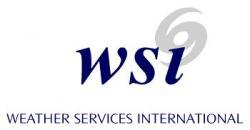Mon, Dec 21, 2009
Blame It On The Weatherman? Suit Claims WX-Related
Injuries Were Preventable
 Donna Dacko and Inga Isakson have
filed a legal claim against both the FAA and Weather Service
International (WSI) over injuries sustained when Alaska Airlines
Flight 464 hit severe turbulence on the way into ONT midmorning on
December 25, 2007. According to their attorney, Alisa
Brodkowitz, the claim precedes the inevitable lawsuit and was
filed to avoid a statute of limitations issue, on Dec 25.
Donna Dacko and Inga Isakson have
filed a legal claim against both the FAA and Weather Service
International (WSI) over injuries sustained when Alaska Airlines
Flight 464 hit severe turbulence on the way into ONT midmorning on
December 25, 2007. According to their attorney, Alisa
Brodkowitz, the claim precedes the inevitable lawsuit and was
filed to avoid a statute of limitations issue, on Dec 25.
Dacko and Isakson were up doing final compliance checks during
the incident. Isakson suffered a head injury with loss of
consciousness and concussion while Dacko sustained multiple
fractures to her ankle. No other crewmembers or passengers were
injured.
The claim lists WSI as negligent in accurately reporting the
weather to the airline. The National Weather Service (NWS)
issued a SIGMET for occasional severe turbulence, but that
information was allegedly not included in the report provided to
the flight crew. CFR 121.601 requires the dispatcher to provide all
weather reports and forecasts to the PIC.

The claim against the FAA holds ATC responsible for not passing
on the SIGMET to the inbound flight. The NTSB report shows that
some aircraft did get the advisory, but flight 4646 "apparently...
was not one of them."
Lawyer and former Alaska Airlines pilot John Nance was quoted by
the Seattle Times as saying that he has never heard of a case
similar to this. "For a suit like this to be successful they are
going to have to show the defendants, the FAA in particular, had
evidence of turbulence and had a duty to transmit it to the crew
and didn't do that," said Nance. "That's a steep mountain to
climb."

The NTSB report on the accident lists the probable cause of the
incident to be: "The lack of turbulence forecasts available to the
flight crew, which resulted in the flight attendants not being
seated when the flight encountered severe terrain-induced
turbulence. Contributing to the accident were the terrain-induced
turbulence, the failure of the company that provided the flight's
weather briefing to forecast severe turbulence, and the failure of
the dispatcher to provide the National Weather Service severe
turbulence forecast to the flight."
The claim shows the flight attendants are seeking to have WSI
pay for medical expenses, pain and suffering, emotional distress,
and lost wages.
More News
Terminal Radar Service Area Airspace surrounding designated airports wherein ATC provides radar vectoring, sequencing, and separation on a full-time basis for all IFR and participa>[...]
Very High Frequency (VHF) The frequency band between 30 and 300 MHz. Portions of this band, 108 to 118 MHz, are used for certain NAVAIDs; 118 to 136 MHz are used for civil air/grou>[...]
“From approximately November 2021 through January 2022, Britton-Harr, acting on behalf of AeroVanti, entered into lease-purchase agreements for five Piaggio-manufactured airc>[...]
Also: Virtual FLRAA Prototype, IFR-Capable Autonomous A/C, NS-32 Crew, Golden Dome Missile Defense Bombardier announced that the first production Global 8000 successfully completed>[...]
Aero Linx: The 1-26 Association (Schweizer) The Association’s goal is to foster the helpfulness, the camaraderie, and the opportunity for head-to-head competition that is fou>[...]
 ANN's Daily Aero-Term (05.29.25): Terminal Radar Service Area
ANN's Daily Aero-Term (05.29.25): Terminal Radar Service Area ANN's Daily Aero-Term (05.30.25): Very High Frequency (VHF)
ANN's Daily Aero-Term (05.30.25): Very High Frequency (VHF) Aero-News: Quote of the Day (05.30.25)
Aero-News: Quote of the Day (05.30.25) Airborne 05.23.25: Global 8000, Qatar B747 Accepted, Aviation Merit Badge
Airborne 05.23.25: Global 8000, Qatar B747 Accepted, Aviation Merit Badge ANN's Daily Aero-Linx (05.30.25)
ANN's Daily Aero-Linx (05.30.25)





